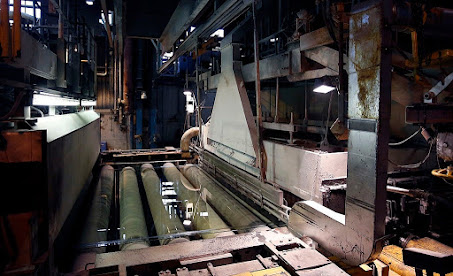How glass is made?
Glass has become so extremely
common that it is easy to see right through it without thinking twice. It can
be found in our windows, on our phones, in our cabinets, and in many of the
devices, we use every day. Even though glass can be found everywhere, you may
go your entire life without knowing much about how it is made or what it is
made of.
Because of its transparency, versatility, and heat resistance, glass is extremely useful material. It's also cheap to make and highly recyclable. It is also completely stable, which means that a glass container will not react with the components. For these and other reasons, glass is one of the most widely used and versatile materials available.
What is the formation of glass?
Glass, believe it or not, is made from sand. Glass can be made by heating ordinary sand (that is mostly composed of silicon dioxide) until it melts and becomes a liquid. That is not going to happen at your local beach. The type of heat required to transform sand into a liquid state (and ultimately into glass) seems to be much extremely hot than any warm summer day. Sand melts at 1700°C, which is an extremely high temperature.
What is the manufacturing process for glass?
Sand is heated in a furnace with
waste glass, soda ash (sodium carbonate), and limestone (calcium carbonate), small
quartz crystal grains (silicon dioxide) in a glass plant. The recycling of
glasses decreases the melting point of the sand, which saves energy during
manufacturing, but it has an unusual property: it produces a type of glass that
dissolves in water, that is why limestone is added to prevent this from
happening.
Glass can have a variety of
properties depending on the sand mixture. Certain elements or chemicals mixed
with sand, for example, can change the color of the glass. Glass's properties
can also change depending on how it is manufactured and the processes used to
shape it afterward. Thermal temperature, which involves rapidly heating and
cooling glass, can be used to strengthen it. Glass can also be chemically
strengthened through an ion-exchange process, which toughens the surface of the
glass.
Stained glass is created by combining metal salts such as iron, manganese, chromium, and tin with molten glass to create a variety of appealing colors.
Floating glass process
Float glass, also known as flat glass, is created by floating molten glass on top of a bed of molten tin. The molten glass spreads across the metal's surface, resulting in a high-quality, consistently level sheet of glass that is later cut to size. This method produces glass with a uniform thickness and a very flat surface. As a result, the glass produced is free of waves and distortion.
This technique can produce glass continuously
24 hours a day. As a result, a river of glass exits the furnace before being
cooled as it develops along its 300-meter path and is then cut into very large
sheets.
Glass Process From Beginning To End
Raw material processing
The primary components, which
include silica sand, calcium oxide, soda, and magnesium, are weighed and
blended into batches before being mixed with recycled glass (cullet). The usage
of a 'cullet' minimises energy consumption. Under automated control, the
components are tested and stored for eventual blending.
Raw materials are melted.
The melted raw materials are
transferred from mixing to a five-chambered furnace. In the furnace, temperatures
can reach 1600°C. From this sand starts to look like honey
Transferring the molten glass to the tin bath
The molten glass is then
"floated" upon a bath of molten tin at around 1000°C. It produces a
"ribbon" that is usually between 5 and 6 mm wide. Ribbon thicknesses
ranging from 1.9mm to 19mm can be created by drawing the glass via a sophisticated
process using top roll machines. Because the glass, which is hard and brittle,
and the very fluid tin, do not mix, and the contact surface between these two
materials is flat, the result is referred to as "flat" glass.
The molten glass is cooled in the curing lehr.
After exiting the molten tin bath, the glass has cooled sufficiently to enter a curing chamber known as a lehr, where it will be anodized. The glass is now hard enough to pass through rollers and has been tempered, which changes the internal stresses, allowing it to be cut and manipulated reliably and ensuring the flatness of the glass. Because both sides are fire-finished, there is no need for grinding or polishing.
Glass inspection
After cooling, the glass is
subjected to strict quality inspections. It is then sliced into sheets of
various sizes and then transported to their dealers. This is the universal
process done for the glass. From here the glass will be transported to various
industries such as Automotive, Construction, Technology, etc.
We hope that you have got your
answer about glass and if you have asked any questions related to glass leave
us a comment below. Share this blog with your friends so that they should also
know the making of glass. You can join our telegram channel @trishnadesign so
that you will get notifications from our various social media platforms.









Thank you for sending me the information about it. If you Check interior designer for hotels in bhopal ! It would Definitly Worth your Time and I learned a lot from it. I appreciate the detail you went into it. I am grateful for the amount of time and effort you put into this helping us. Your insights and summary are beneficial.
ReplyDeleteDr. Cabinet is a professional company that provides cabinet repair and furniture repair services that specializes in bringing your old doors.https://www.drcabinet.com/
ReplyDelete